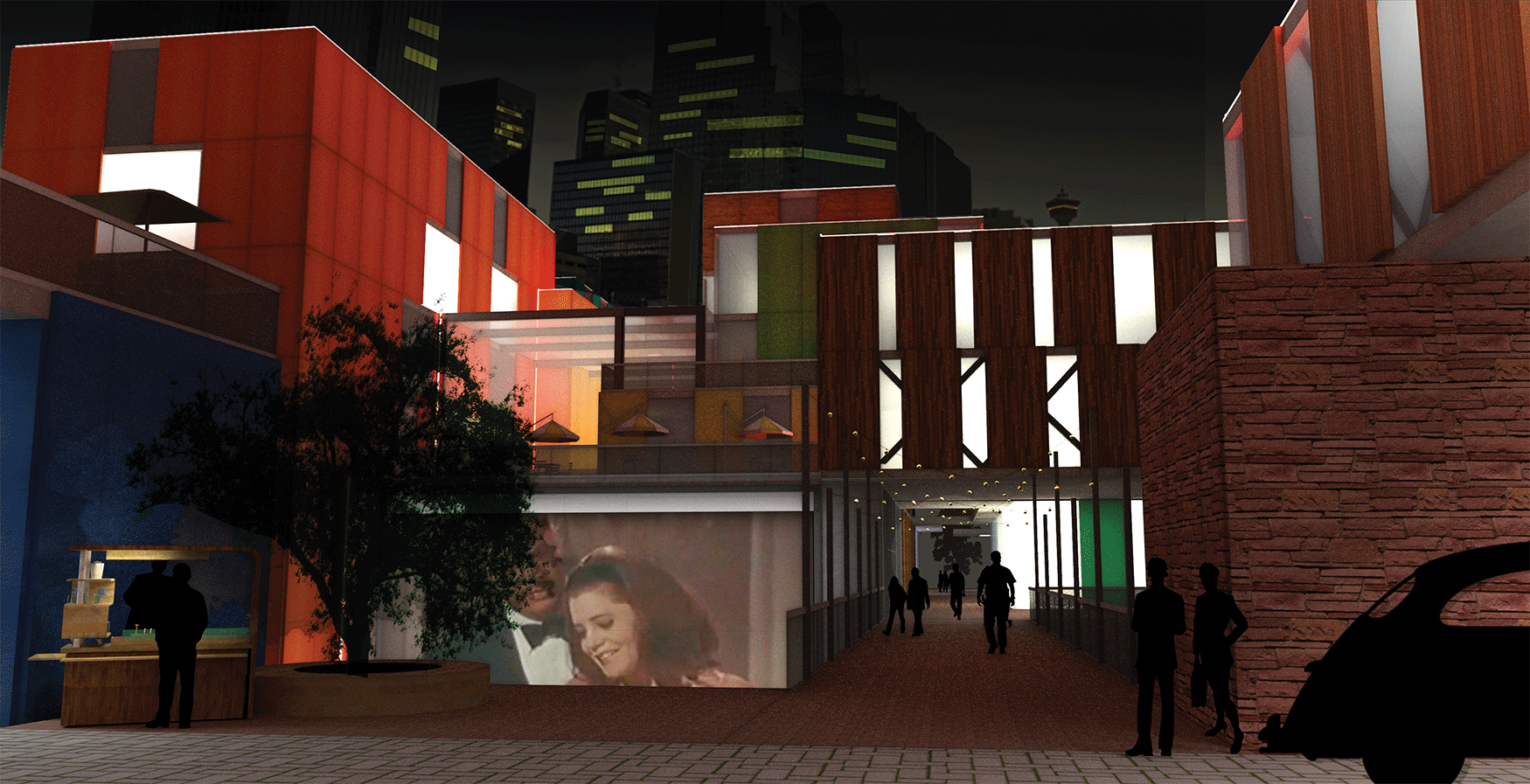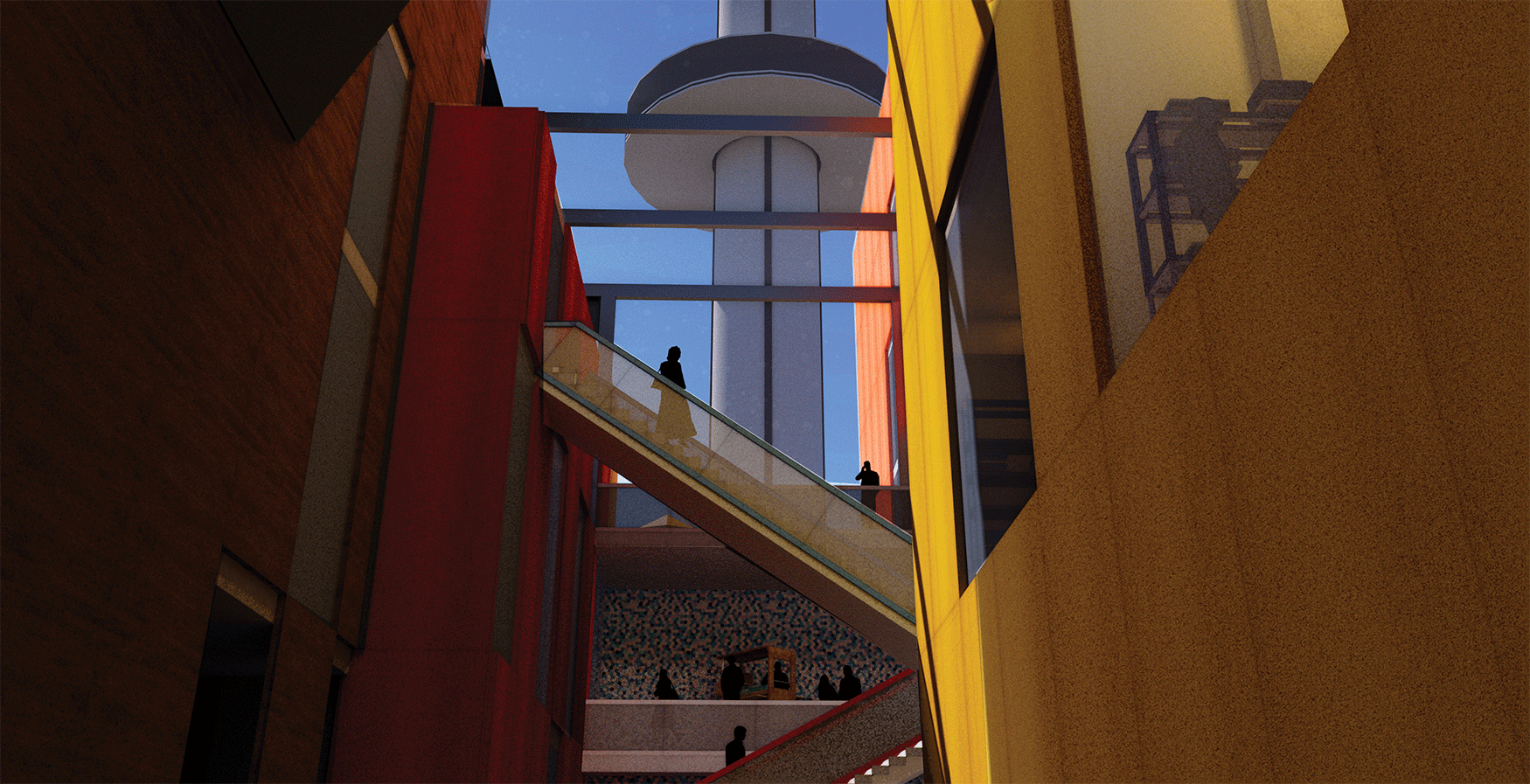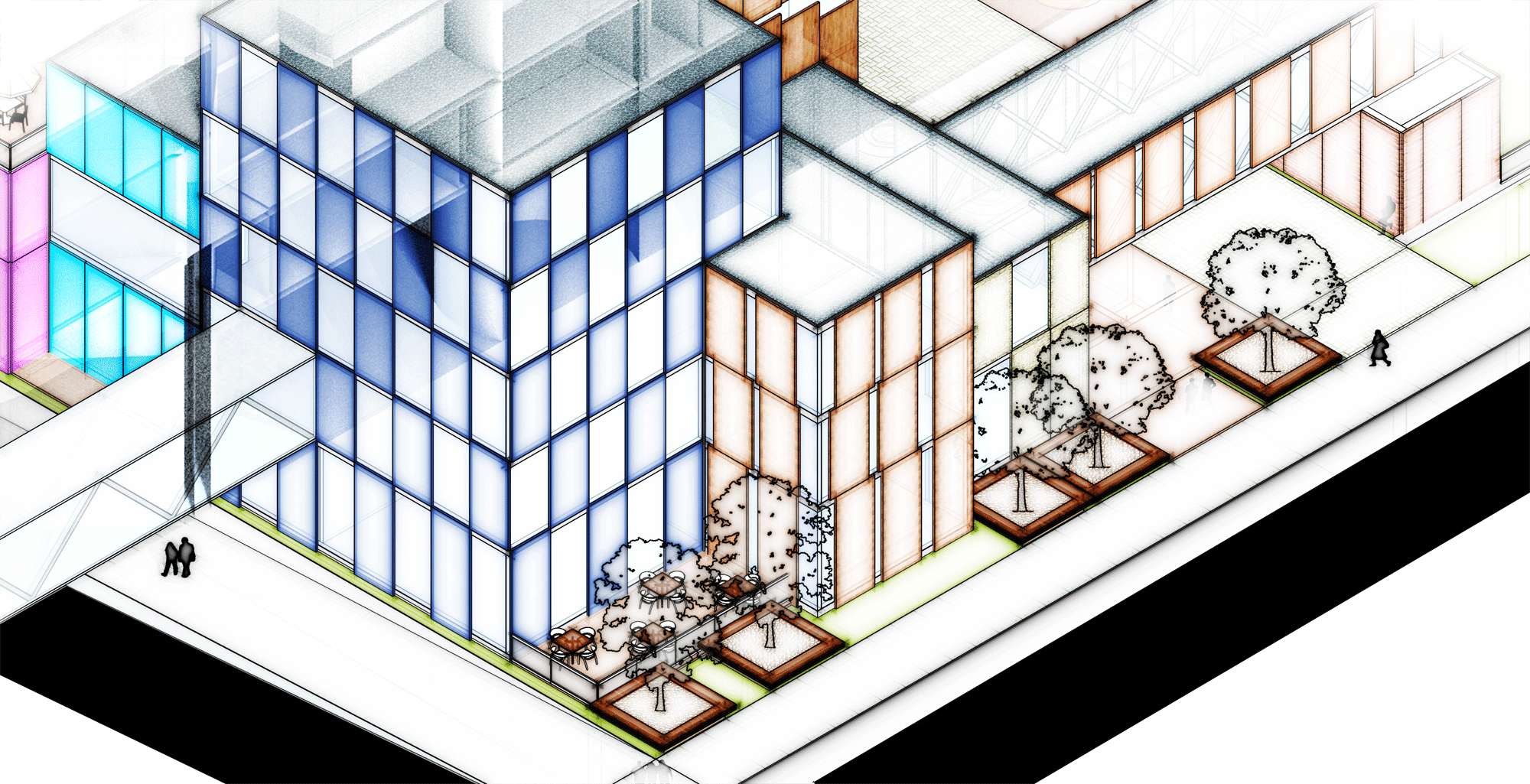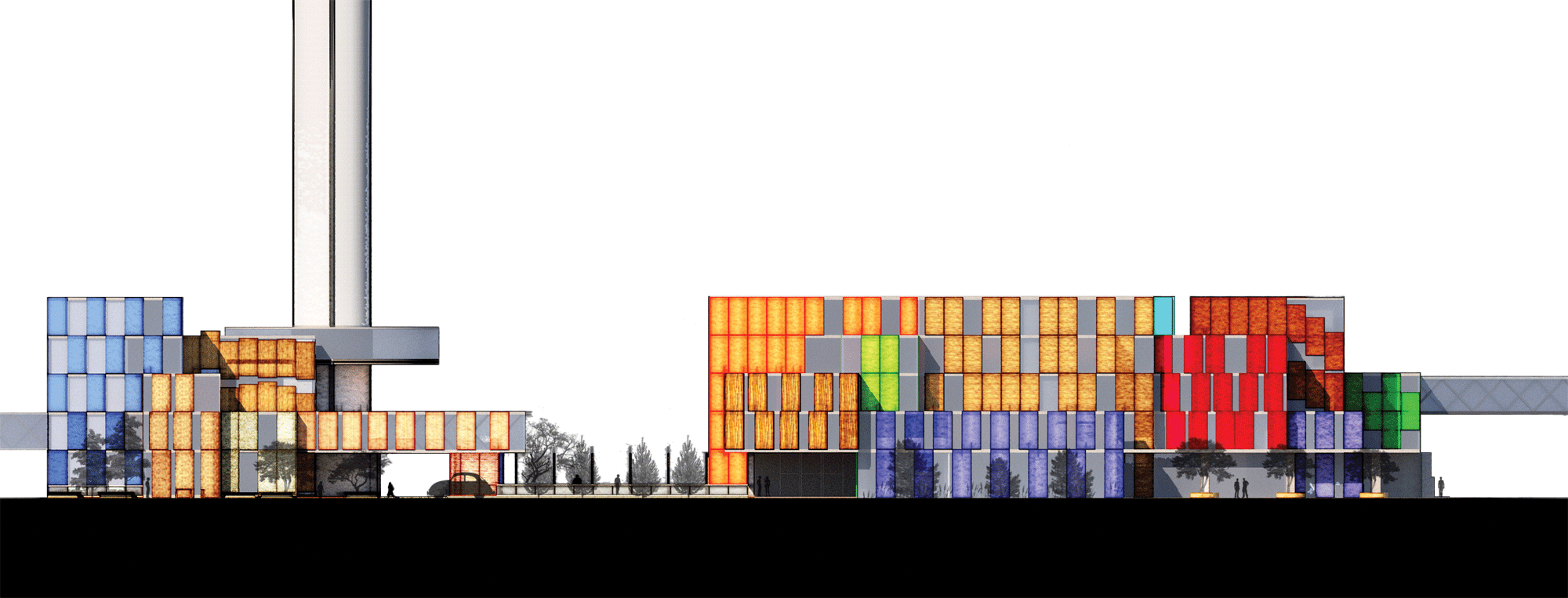story
Holes in the fabric of a city, left by abandoned construction, parking lots and utility sites. Holes that nonetheless become part of the city. That integrate into the mental image of the city. But holes regardless.
The Calgary Central Culture Market (CCCM) is an attempt to fill one of those holes in the heart of Calgary’s Beltline district. An aborted commercial building left behind three underground and one above-ground storeys worth of concrete superstructure, and a massive excavation pit. Sitting empty for five years it had become part of the neighbourhood like many other sites adjacent to the railway through the downtown.
Beltline
The Beltline area of Calgary is immediately south of the downtown core, divided from it by the Canadian Pacific Railway. It is a medium-to-high density mixed use area with major corporate offices and tiny independent shops and restaurants. It is a diverse, exciting, fluid area and one that shows of a large cross-section of Calgary’s culture. The specific study area for this project was the lots immediately north and south of the CP Railway between 14 St SW and Macleod Trail. The aborted construction site selected is at the centre of the area, immediately south of the railway between 4 St and 5 St SW.
Project intent
The goal was to utilize this site to its maximum extent, without creating a single massive structure. Additionally the existing construction was to be used as a core element of the project, including the excavation pit. The final project attempted to demonstrate an exciting, diverse collection of pavilion-like geometries and attractions that mirrored the diversity of the neighbourhood, while making new connections across the site and the railroad. The project intends to be a central celebration of cultures from across Calgary.
form generation
With the explorations into site, circulation, massing and facades, a final massing process was identified. This is based on the preservation of the existing construction artifact and creating a complex aggregation of volumetric elements that read as pavilions. Space is carved into the artifact to create an open core around with pavilions can aggregate, and finally an observation tower is added late in the design as an additional way of viewing the city.
site, connections and scale
The final site plan expresses this massing, maintain connections to the +15 network at the east and west edges, while opening up pedestrian access to 4 St SW, 5 St SW and 10 Ave SW. A significant portion of landscaping is introduced as required by zoning, with ample public space and promenade around the two distinct aggregations and observation tower.
Circulation throughout the site and buildings is focused on moving people east to west, while cutting the +15 system at the centre. This forces +15 users to leave the system in this building, travel to the ground level, and back up to the +15 at the other end before continuing. The goal being to increase the opportunity for people to experience the elements of the project. A vehicle access to underground parking and loading (shown in purple) is provided directly off of 10 Ave SW
program, structure, ecology
Three distinct structures of the project are the West building, East building and Observation tower. The programmatic elements identified early in the project become manifest in the breakdown of the East and West building, while the observation tower addresses the fact that the Calgary Tower no longer provides a view of the entire city of Calgary. This new tower, at 250m tall, provides an ability to once again see all of Calgary.
The rectilinear nature of the building, combined with substantial flat roofs and landscaped areas, allowed for an extensive rainwater reclamation system to be introduced. Large roofs of the east and west building collect run off, while large paved areas utilize permeable pavements to collect water. This is collected in a centralized cistern, with water used for landscaping and greywater systems throughout the project.
The structure of the project is largely based on the existing construction on site. Traditional concrete construction of beams, columns, slabs and cores is used in both the east and west buildings. Cores are arranged at the high points in the aggregation of volumes, with columns based on the established project grid (with modifications as needed). Limited steel truss elements are introduced for select cantilevered and bridging elements. The observation tower’s structure is not included in this scope.



